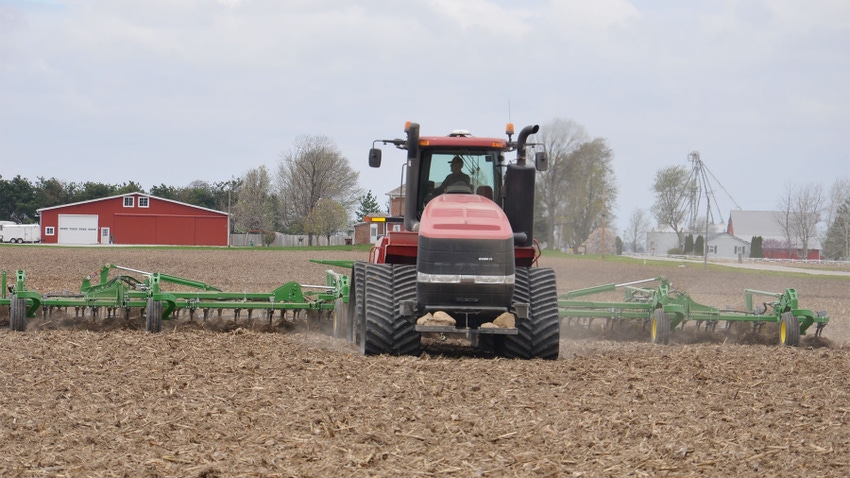March 11, 2024

With so many items on the preplant to-do list, tillage may not always make the cut. Only those who stick with spring tillage have made it a permanent item on that list.
Making the decision to either swear by or skip spring tillage ultimately depends on your goals for each farm. Make the decision easier by considering the pros and cons of each situation.
Swearing by spring tillage
Tillage can help ensure you plant into a smooth, well-prepared seedbed. This is one reason why Scott Henderson, Franklin, Ind., keeps it on his spring checklist.
“We get the ground to air out, so if there’s moisture, it can air out and warm up quick,” Henderson says. “We’ll get a nice seedbed to plant into.”
Henderson’s spring tillage plans are dependent on the fall tillage that he completes. Typically, spring tillage consists of using his cultivator with rolling baskets to work soybean stubble on flat ground. He also works corn stubble on flat ground with the cultivator.
He usually works those cornstalks on flat ground in the fall with a disk ripper. He sprays rolling corn ground in the fall and spring, leaving it as no-till. Additionally, he works rolling soybean stubble ground in the fall with a no-till in-line ripper, leaving most of the residue undisturbed while breaking up soil compaction.
“It took years of practice to develop this routine,” Henderson adds. “We’ve been using field cultivators forever.”
Henderson explains that he will work the ground a second time if he’s not satisfied with his first tillage pass. With tillage, he sees a 20- to 30-bushel-per-acre yield advantage in corn. The yield gain isn’t noticeable with beans, but he rarely replants. The only downside is expense and labor associated with tillage.
“Tillage is very expensive,” Henderson says. “You’re burning quite a bit of fuel, even though fuel is miniscule in our grand costs. The thing that bothers me more is the depreciation on the equipment and the costs of those tractors.”
Kicking tillage off the checklist
Rodney Rulon, Cicero, Ind., explains that cutting those costs when he ditched tillage 30 years ago made an immediate difference.
“From day one, we had a financial boost because we were able to get rid of a bunch of equipment that we didn’t need anymore,” Rulon says. “We had a bunch of labor and fuel savings right off the bat.”
Changes in the soil were slower, but after three decades of no-till, he has seen a reduction in erosion. Runoff is clear, residue decomposes more quickly, and water infiltration rates are faster, especially following big rains. Additionally, Rulon has noticed that his crops are not hit as hard by dry spells.
The only difficulty Rulon faces is cooler, wetter soils that take longer to warm up in cold springs. However, he combats this by planting hybrids and varieties that fare well in the cool soil. He also manages nitrogen effectively by ensuring there is a high rate at planting to support early growth.
“You’ve got to be aware of how you switch your program to meet how the system works,” Rulon adds.
Ultimately, Rulon recognizes that the decision to incorporate tillage depends on each field’s situation. Henderson reflects that belief, understanding that swearing by or skipping spring tillage is determined by how each producer wants to care for their land.
“We’ll try to do whatever’s best for the farm,” Henderson concludes.
About the Author(s)
You May Also Like






